A subtle, ethereal mist seems to envelop Helia Chitsazan’s paintings—an effect one can only truly appreciate in person.
This impression was especially evident in Forces of Change and Memory, Chitsazan’s solo exhibition at Fou Gallery, on view from October 12 to December 22, 2024. Curated by Nina Chkareuli-Mdivani, the exhibition showcased Chitsazan’s distinctive style of painting, characterized by primal, deliberate brushstrokes that conjure an almost tangible mist hovering above the canvas. Her works create an atmosphere where reality and spirituality blur, immersing the viewer in a space filled with ambiguity and mystery.
In Outside In, Inside Out, the sense of mystery deepens. Although the painting depicts a room filled with people, it doesn’t feel crowded.Its composition and linear perspective allows the vision to keep stretching out to further, unknown places. Some wear masks, while others have ambiguous, obscured faces, their identities remaining elusive. All of them gaze out at the viewer with an enigmatic intensity, as though guarding an unspeakable secret. In the center of the scene, someone holds a giant mirror, hiding behind it while at once attempting to reveal the deepest truths.

At the center of the painting is a distant door, illuminated by a cool, shimmering light that contrasts with the warm-toned foreground. This doorway acts as a visual anchor, drawing the viewer’s eye and evoking a sense of historical gravity. It recalls the compositional depth of Diego Velázquez’s Las Meninas, a comparison that suddenly clarified for me what curator Mdivani meant in her essay: “Chitsazan creates an off-modern route for Iranian visual tradition.” Chitsazan’s paintings carry a profound historical weight, offering a spiritual lens for examining both individual and collective memory.
Chitsazan often leaves space in her paintings for the imagination to unfold. Mirrors, masks, and obscured brightness are common elements, as seen in Az-An. Here, she takes a bold approach, leaving much of the canvas blank to convey an overexposed, intensely bright space. This blankness creates a tension—an airy yet charged atmosphere. The painting feels like a portal to somewhere surreal, which is why Chitsazan named it Az-An, inspired by the Islamic call to prayer “azan.” She recalls feeling a surreal, intense, and almost frightening emotion when hearing the azan on quiet Friday afternoons in her home in Tehran.
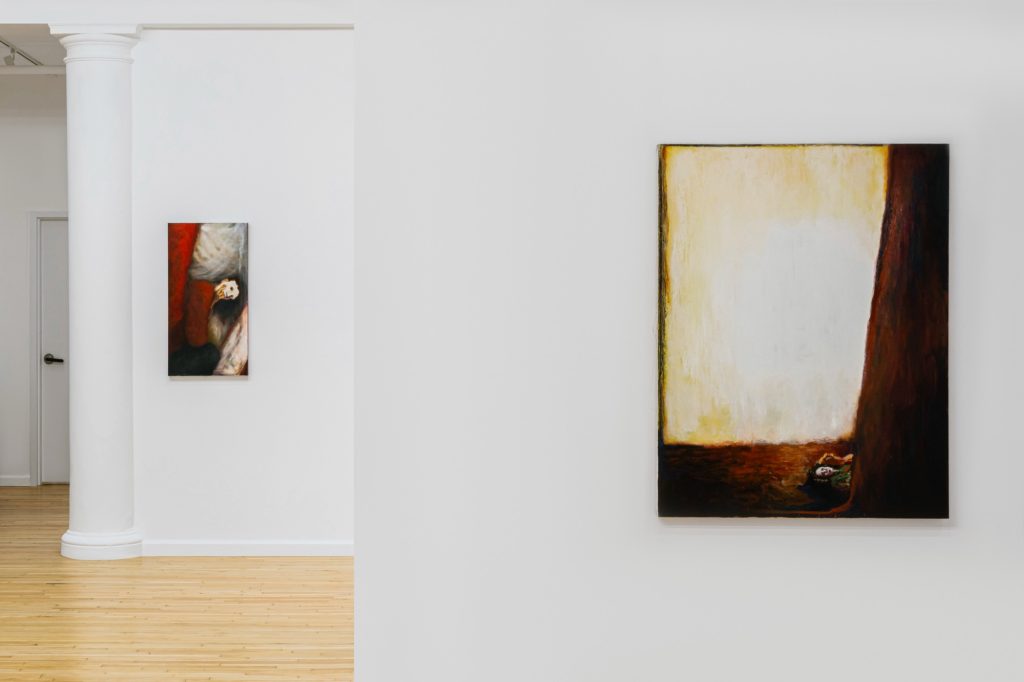
Right: Az-An (2024) Left: The Mirrored (2024)
The migration from Tehran to New York brought profound changes to Chitsazan’s life. The physical distance allowed her to view her hometown through the lens of memory, a theme that permeates much of her work in this exhibition. The theme of masks recurs, as seen in Halfway In and Out, where a girl in a corner is reflected in the mirror, putting on a mask. Similarly, in The Concreted, a girl lies in a narrow, suffocating space, her gaze fixed on the viewer as if making a desperate, final plea for help. These blurred identities convey a subtle intimacy as if they embody those Chitsazan holds close in her thoughts or carries in her heart.
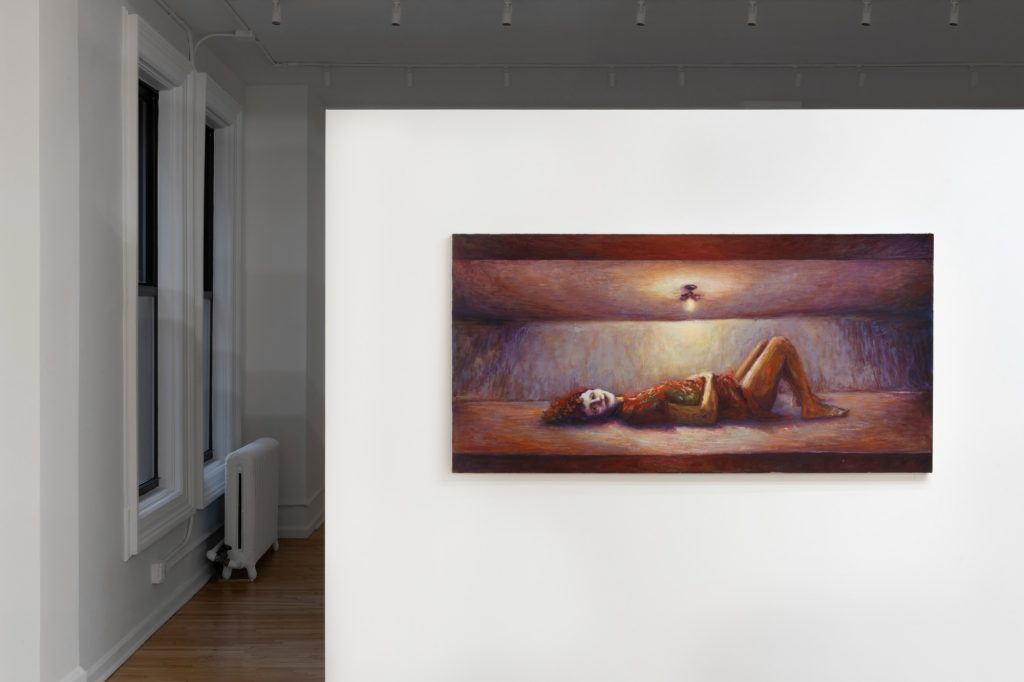
Right: The Concreted (2024)
In 2022, the death of Mahsa Amini, a young Kurdish-Iranian woman detained by Tehran’s morality police, sparked the Women, Life, Freedom movement. This movement, demanding an end to compulsory hijab laws and systemic oppression, marked a life-changing moment for Iranian women, including Chitsazan. Though physically distant from Tehran, Chitsazan experienced the tragedy deeply, following the events online and channeling her emotions into her work.
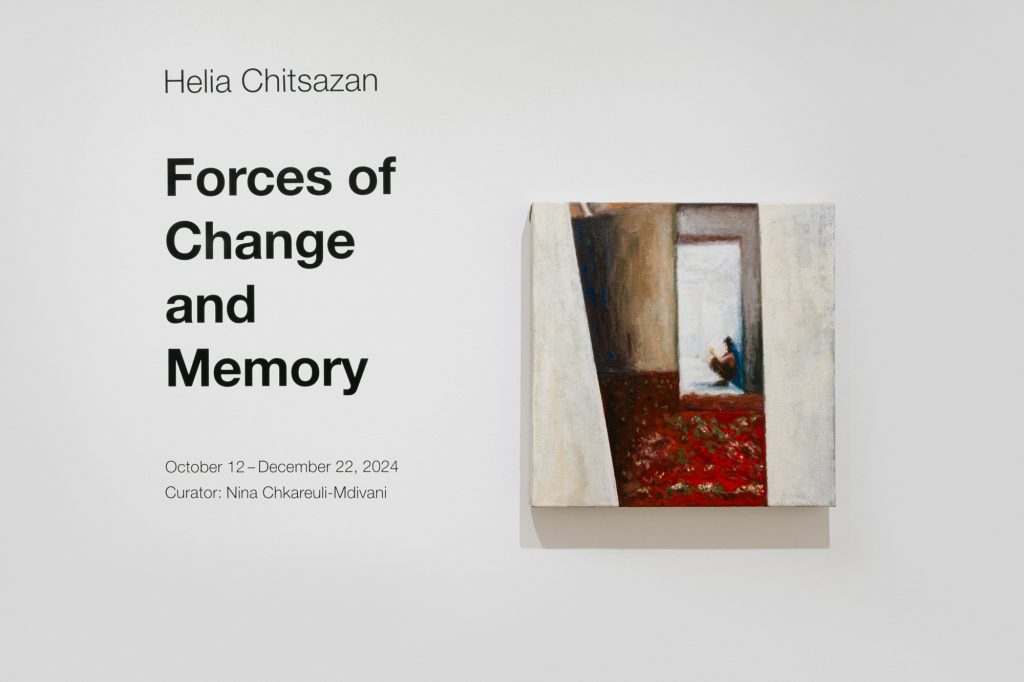
Right: Halfway In and Out (2024)
This personal connection is evident in her self-portraits, where she often wears a mask. In Fully Settled In, she reflects on herself in a strange posture, masked and gazing into a mirror, where her own reflection blends with the struggles and resilience of her people in Iran. The mask becomes a symbol—not of disguise, but of protection and resistance during this pivotal time for Iranian women.
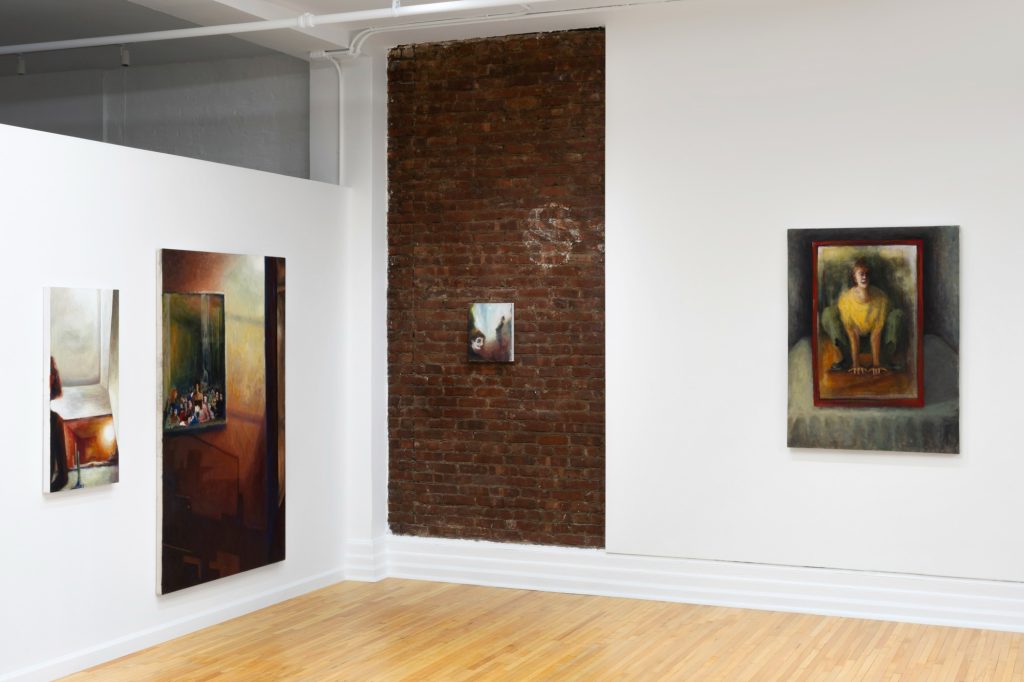
Right to Left: Fully Settled In (2023), The Wolf and the Sheep (2023), The Sounds from the Second Floor (2024), Connecting (2024)
Chitsazan describes the distance from her homeland as resembling living within a bubble, observing events unfold from the outside. In The Sounds from the Second Floor, this emotional separation is embodied by a mirror reflecting a crowded, struggling mass. On closer examination, the figures seem to be caught in a swirling vortex, echoing Chitsazan’s own feelings of entanglement and displacement. The mirror serves as a poignant metaphor for the delicate boundary between her emotional ties and the physical distance from Iran.
While the emotions in Chitsazan’s paintings are powerful, they are not the sole dimension of her work. These feelings are deeply rooted in the values and traditions of her Iranian upbringing. At the same time, her paintings consistently explore pathways beyond the societal constraints she experiences. In Please Take a Seat, the dreamlike imagery reveals a long hallway with a door at its end, leading to a parallel world beyond the painting’s surface. For Chitsazan, her art becomes a bridge between memory and reality, a way to navigate societal limitations and imagine a way forward.
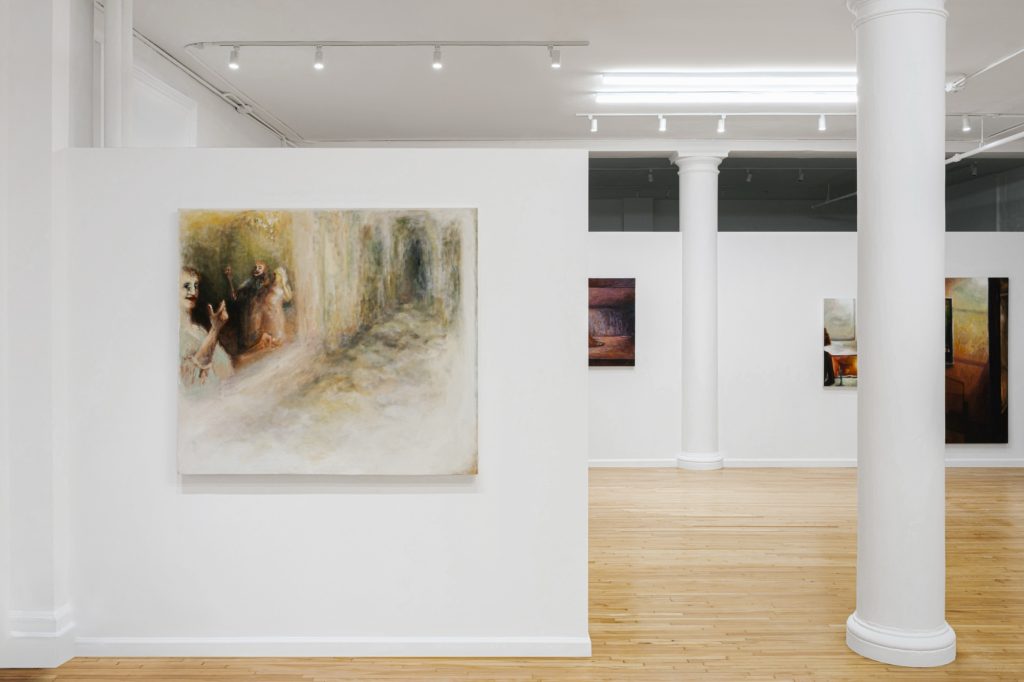
Left: Please Take a Seat (2023)
In works like Lost You for a Second and To the Rhythmic Movement of the Body, the influence of the digital age becomes apparent. Iranian women can now glimpse Western values, but only through a narrow, surveilled perspective. Chitsazan’s art captures this tension while reflecting the resilience of Iranian women, who continue to resist oppression. Her paintings become her medium of care, advocacy, and resistance.
I am embraced and settled by the mist from Chitsazan’s paintings—gentle yet resilient. Her work carries the weight of memory, advocacy, and the quiet strength of women everywhere. Like a veil of mist, it blurs the line between presence and absence, drifting between worlds. In its shifting haze, one finds both fragility and resilience—an echo of those who came before, lingering in the air.
